Overview:
The article focuses on how to effectively integrate AI into 3D architectural rendering to enhance efficiency and visual quality. It details various AI tools that automate processes, improve realism, and facilitate real-time collaboration, thus transforming design practices and meeting the increasing demand for innovative architectural solutions.
Introduction
In the realm of architectural design, the integration of advanced technologies is reshaping traditional practices, with 3D architectural rendering at the forefront of this transformation. This essential process not only enables architects to translate complex concepts into visual representations but also serves as a critical communication tool between architects and clients.
As the demand for high-quality visualizations grows, the incorporation of artificial intelligence (AI) is revolutionizing rendering workflows, enhancing both efficiency and detail. From automating repetitive tasks to delivering photorealistic images, AI tools are redefining the standards of architectural visualization.
This article delves into the foundational elements of 3D rendering, explores cutting-edge AI applications, and examines the future trends that promise to further elevate the architectural rendering landscape. As the industry evolves, understanding these dynamics is crucial for architects aiming to remain competitive and innovative in their design endeavors.
Understanding 3D Architectural Rendering: A Foundation for AI Integration
3D architectural visualization entails producing two-dimensional images or animations that effectively highlight the attributes of a suggested plan. This process is essential for facilitating communication between architects and clients, enabling a clear visualization of concepts long before construction begins. Establishing the suitable level of detail in these visuals is crucial for homeowners and businesses, as it helps in aligning client expectations with project results.
Levels of detail can range from basic massing models to intricate, photorealistic representations that include materials, lighting, and contextual elements. Mastery of fundamental elements—such as lighting, texture, and perspective—is crucial for impactful visualization; for instance, effective lighting can significantly influence spatial perception, while texture provides depth and realism to surfaces. Techniques like ray tracing and polygon modeling are fundamental in this field.
- Ray tracing simulates light behavior to produce photorealistic images, whereas polygon modeling creates intricate 3D shapes from vertices, ensuring structural integrity in creations.
- The guide to AI in 3D architectural rendering highlights how the incorporation of AI tools is transforming these workflows, automating production processes, and enabling architects to focus on creative solutions.
- AI can enhance the level of detail by quickly generating variations of designs based on client feedback, thus streamlining the iterative process.
Significantly, the visualization and simulation sector held a 37% market share in 2023, highlighting the growing dependence on sophisticated imaging technologies. Additionally, case studies emphasize the essential function of pre-sales visualization in fostering project confidence and drawing investment through captivating illustrations that act as tangible assets. As AI advances, the guide to AI in 3D architectural rendering indicates that its use in building visualization is poised to improve efficiency and quality, marking a significant change in design practices.
Accurate market reports, as emphasized by industry experts, are also vital in ensuring stakeholder communication and informed decision-making, ultimately leading to enhanced client satisfaction and marketing effectiveness.
Top AI Tools for Enhancing 3D Architectural Rendering
In the rapidly evolving landscape of architectural visualization, the guide to AI in 3D architectural rendering highlights several AI tools that have emerged as pivotal in enhancing the efficiency and quality of 3D visualizations, particularly when clear and timely information is provided. Providing the right information early is crucial to optimizing the processing and avoiding delays. Among the most notable tools are:
- Lumion: Renowned for its real-time visualization capabilities, Lumion empowers architects to produce high-quality images swiftly. Its AI-driven features facilitate automation in tasks such as vegetation placement and lighting adjustments, significantly reducing manual effort while ensuring accuracy through meticulous detail.
- Enscape: This innovative tool seamlessly integrates with widely-used design software, ensuring instant visualization and immersive walkthroughs. The AI-enhanced functionalities streamline the processing method, elevating user experience and fostering client collaboration to align with their vision.
- D5 Render: A cutting-edge real-time visualization software, D5 Render utilizes AI to deliver photorealistic results with minimal effort. Its user-friendly interface allows designers to focus on creativity instead of struggling with technical complexities, facilitating customization and revisions that are vital in deciding investments for unique visualization projects.
By incorporating these advanced tools into their workflows, architects can refer to the guide to AI in 3D architectural rendering to achieve breathtaking visualizations while optimizing time and resource management. The essential role of high-quality visual representations in project development and decision-making cannot be overstated. Notably, the architectural sector shows a robust inclination towards technological investment, with 70% of firms planning to enhance their technological capabilities over the next year. This urgency highlights the importance of adopting these tools to stay competitive in a growing field, especially as the number of candidates actively working on licensure reaches 35,621, reflecting the increasing demand for skilled professionals. Moreover, MacOS offers a dependable setting for 3D visualization, guaranteeing robust performance and compatibility for designers employing these advanced tools. By ensuring that precise and timely information is shared from the outset, designers can leverage these AI tools to enhance customization and revisions, ultimately informing their investment choices for unique visual projects.
The Transformative Impact of AI on Architectural Rendering
The guide to AI in 3D architectural rendering highlights how AI has fundamentally transformed architectural rendering by introducing capabilities that not only streamline workflows but also significantly enhance visual quality. Here are the primary impacts of AI in this realm:
- Increased Efficiency: AI algorithms automate repetitive tasks, allowing architects to concentrate more on innovation and creativity. For instance, AI can generate multiple variations quickly, facilitating faster decision-making and project progression. Notably, 78% of professionals using AI in architecture plan to pursue further training, reflecting a growing recognition of its potential.
- Enhanced Realism: The guide to AI in 3D architectural rendering showcases advanced AI visualization techniques that deliver photorealistic results that were once labor-intensive. This realism is essential for clients, providing a guide to AI in 3D architectural rendering that allows them to visualize the final product more effectively and engage deeply with the creation process. Des Fagan, Head of Architecture at Lancaster University, observes that large firms are utilizing machine learning to improve their creations based on their historical data, showcasing a dedication to advancing visualization capabilities.
- Significance of Intricate Details: The complex elements in visual representations play a crucial role in boosting realism and emotional effect. Elements such as lighting, texture, and material quality enhance a more immersive experience for clients, making it essential to concentrate on these aspects during the visualization process.
- Data-Driven Creation: AI’s ability to analyze extensive data acts as a guide to AI in 3D architectural rendering, informing creative decisions and optimizing factors like energy efficiency and material usage. This leads to sustainable architectural solutions and improved project outcomes.
- Challenges of Adoption: While AI offers many advantages, the initial investment for hardware, software, and skilled personnel can be a barrier, particularly for small and medium-sized enterprises.
- Seamless Integration: Custom solutions from Rapid Innovation facilitate the smooth integration of AI tools into existing operations, easing the transition for firms adopting these technologies.
- Tips for Hiring Rendering Services: When looking for 3D architectural rendering services, consider the provider’s portfolio, their ability to incorporate intricate details, and their understanding of your project’s unique requirements. Collaborating with a company that prioritizes customization and is receptive to modifications can greatly improve the final result.
- Case Study: In the significant case study ‘Practice Archiving with Machine Learning’, large companies are utilizing machine learning on their creation data to develop a valuable resource from their historical methodologies. This enhances operational efficiency while addressing copyright concerns related to external data sources. By embracing AI technologies, designers can elevate their work quality and foster improved collaboration with clients and stakeholders, as detailed in the guide to AI in 3D architectural rendering. The progress in AI for photorealistic visualization reflects a broader trend, as 19% of architects consider themselves early adopters of digital innovation, indicating a shift towards more efficient and realistic creative practices.
Real-World Applications of AI in 3D Architectural Rendering
The incorporation of AI in architectural visualization is proving transformative, with notable applications across various project types:
Expert Insight: As Jiaqi Li states, ‘Using Artificial Intelligence to Generate Master-Quality Architectural Concepts from Text Descriptions,’ highlighting the potential of AI to revolutionize creative processes.
Case Study: Luxury Residential Project: An architectural firm utilized AI-driven tools to produce breathtaking visualizations for a high-end residence. By automating processes such as lighting and material adjustments, the firm achieved a remarkable 50% reduction in processing time. This efficiency not only expedited the design process but also enabled more iterative and innovative design explorations, enhancing client satisfaction and marketing effectiveness.
Commercial Development: In a significant commercial undertaking, AI was utilized to assess site conditions and generate optimal design layouts. This application not only enhanced rendering quality but also ensured adherence to local regulatory standards, thus streamlining project approvals and execution. Moreover, the guide to AI in 3D architectural rendering highlights how these visualizations serve as effective pre-sales tools, fostering confidence in the project and attracting investment, ultimately generating crucial revenue for construction.
Challenges of AI Integration: Despite its advantages, the integration of AI poses challenges, including ethical considerations and potential job displacement within the design field. Addressing these concerns is essential for the sustainable adoption of AI technologies, especially when weighing the benefits against possible drawbacks.
Virtual Reality Integration: AI tools have facilitated the seamless incorporation of virtual reality into architectural presentations. Clients can now interact with creations in immersive environments, significantly enhancing their experience and feedback. This interactive method fosters clearer communication of intentions and client preferences, thereby eliminating misunderstandings during the construction phase. Moreover, initial visuals play a vital part in promoting dialogue among designers, clients, and other stakeholders, guaranteeing everyone is aligned from the outset and aiding a repetitive design process.
These examples highlight that the guide to AI in 3D architectural rendering is not just a theoretical idea but a concrete resource that can significantly enhance the quality and efficiency of design visuals. Furthermore, the anticipated growth of the AI market, projected to reach USD 13.20 billion by 2030, further highlights the increasing significance of these technologies in the field. Additionally, case studies like the regional AI adoption trends reveal how different markets are embracing AI, with North America and Europe leading due to advanced technologies and regulatory pressures.
Future Trends: The Evolution of AI in Architectural Rendering
As AI technology continues to evolve, several key trends are poised to redefine the landscape of architectural rendering:
Increased Automation: The next generation of AI tools, particularly in creating lifelike CG humans for architectural visualizations, is expected to feature enhanced automation capabilities. This will permit architects to create intricate layouts with minimal manual input, fostering greater creativity and significantly reducing the time spent on technical tasks, thus streamlining the overall creation process.
Real-Time Collaboration: AI’s role in facilitating real-time cooperation among architects, clients, and stakeholders will become increasingly crucial. This capability will allow prompt feedback and adjustments during the development phase, resulting in more agile project execution and enhanced client satisfaction. Notably, statistics indicate that one in five D5 users currently rely on tools like AI Enhancer to optimize their project workflows, highlighting the relevance of these technologies in enhancing productivity. The collaborative rendering process at J. Scott Smith Visual Designs exemplifies this, demonstrating how effective communication and collaboration can lead to exceptional project outcomes.
Sustainability Focus: A growing emphasis on sustainability will drive the use of AI in generating eco-friendly creations by analyzing environmental data and optimizing resource allocation. This aligns with the increasing demand for architecture that is both innovative and environmentally responsible. Industry specialists highlight that sustainability is increasingly essential to AI-driven design processes.
Integration of Augmented Reality: The convergence of AI with augmented reality (AR) will provide designers with advanced tools to visualize their creations in real-world contexts. This technological synergy will enhance client presentations and decision-making, providing a more immersive experience.
Additionally, the architectural workforce is expanding, with reports indicating that there were 35,621 candidates actively working on licensure, reflecting the industry’s growth and the increasing integration of AI. By staying attuned to these emerging trends, architects can use the guide to AI in 3D architectural rendering to position themselves as leaders in the industry, ready to harness the transformative potential of AI in their design methodologies. Furthermore, high-quality visual renderings play a crucial role in project development and decision-making, as they effectively communicate design intent and facilitate informed choices. Documenting AI integration processes and best practices acts as a guide to AI in 3D architectural rendering, facilitating knowledge-sharing, fostering continuous improvement, and enabling smoother AI adoption.
Conclusion
The integration of 3D architectural rendering and artificial intelligence signifies a pivotal shift in architectural practices, enhancing both efficiency and visual quality. The foundational elements of rendering, such as lighting, texture, and perspective, remain critical, yet the infusion of AI tools like Lumion and Enscape has streamlined workflows, allowing architects to focus more on creativity and innovation. The ability to automate repetitive tasks not only accelerates project timelines but also elevates the level of detail and realism in visualizations, which is increasingly demanded by clients.
As highlighted throughout the discussion, the transformative impact of AI extends beyond mere automation; it fosters a data-driven approach to design that optimizes resource allocation and promotes sustainability. The practical applications of AI in real-world projects, from luxury residential designs to commercial developments, demonstrate its capacity to enhance client satisfaction and drive investment through compelling visual storytelling. Moreover, the anticipated growth of AI technologies in the architectural sector underscores the urgency for firms to adopt these innovations to remain competitive.
Looking ahead, trends such as increased automation, real-time collaboration, and a focus on sustainability will shape the future of architectural rendering. By embracing these advancements, architects can position themselves at the forefront of a rapidly evolving industry, leveraging AI to not only meet but exceed client expectations. Ultimately, the fusion of advanced rendering techniques and AI not only enriches the design process but also promises to redefine the standards of architectural excellence in the years to come.
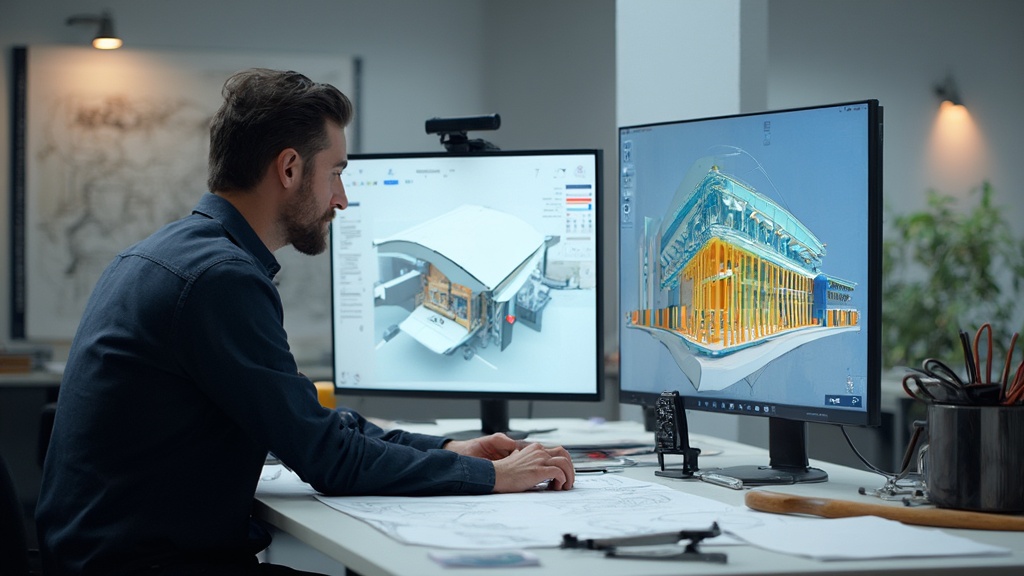
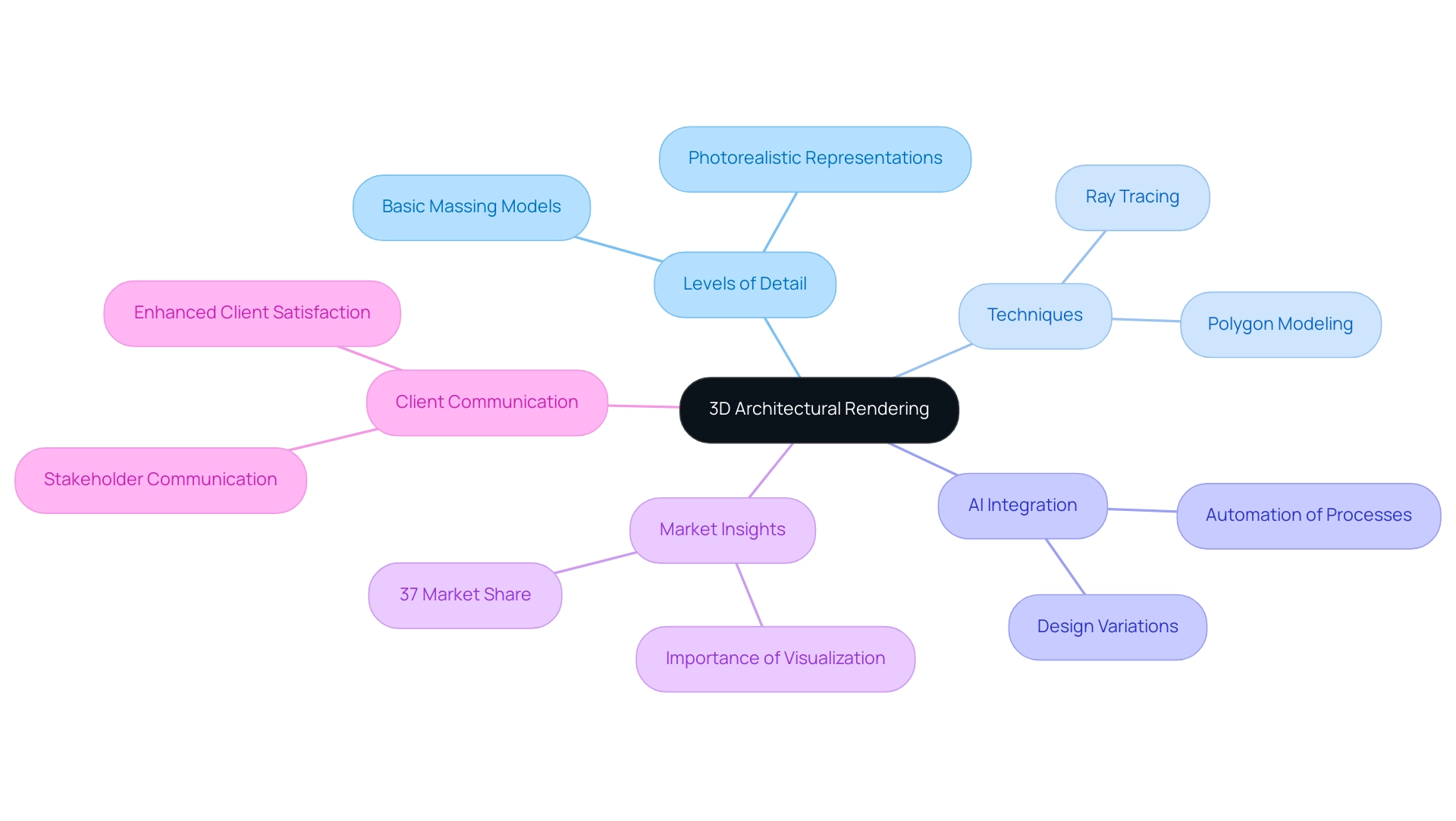
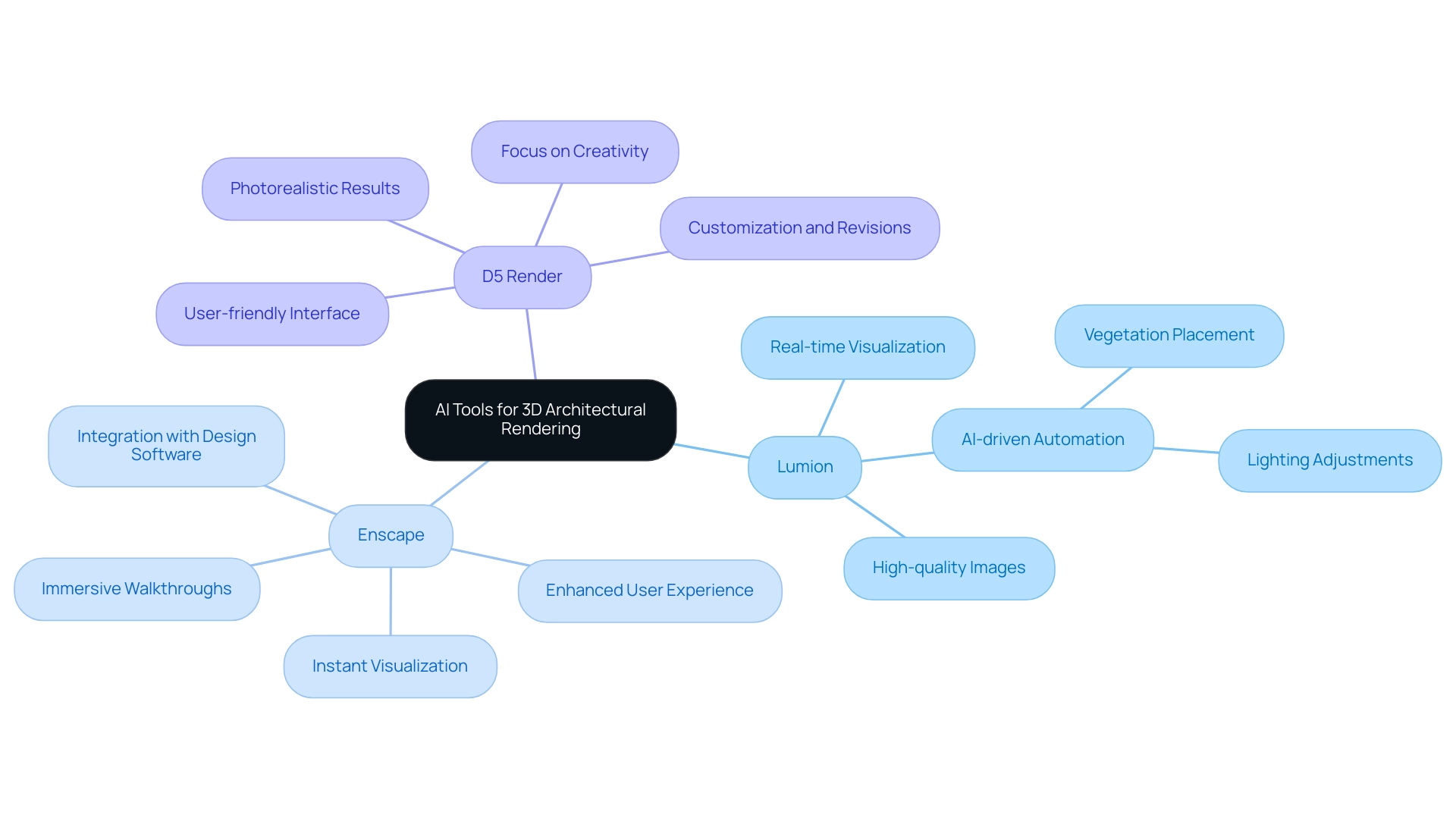

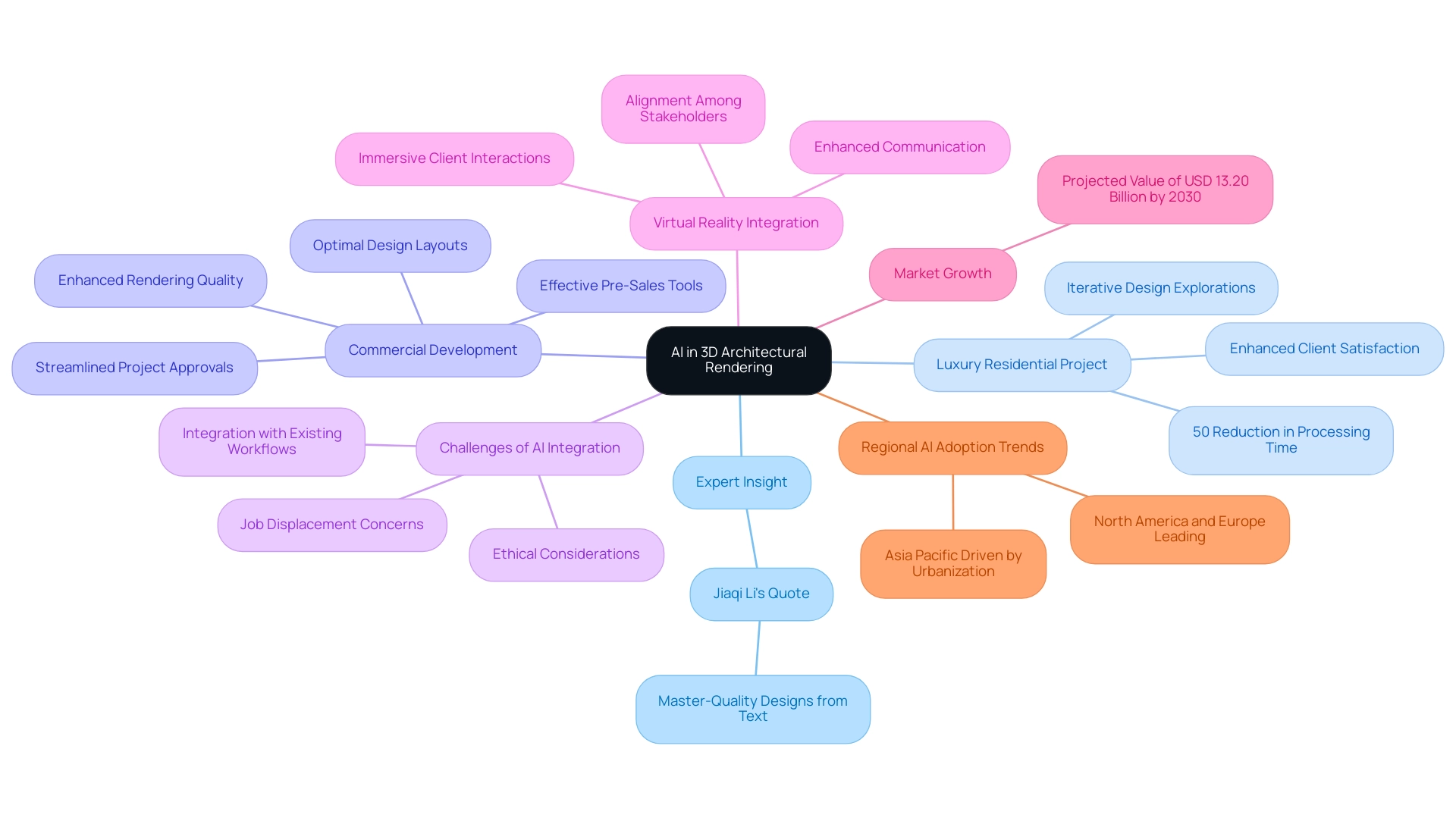
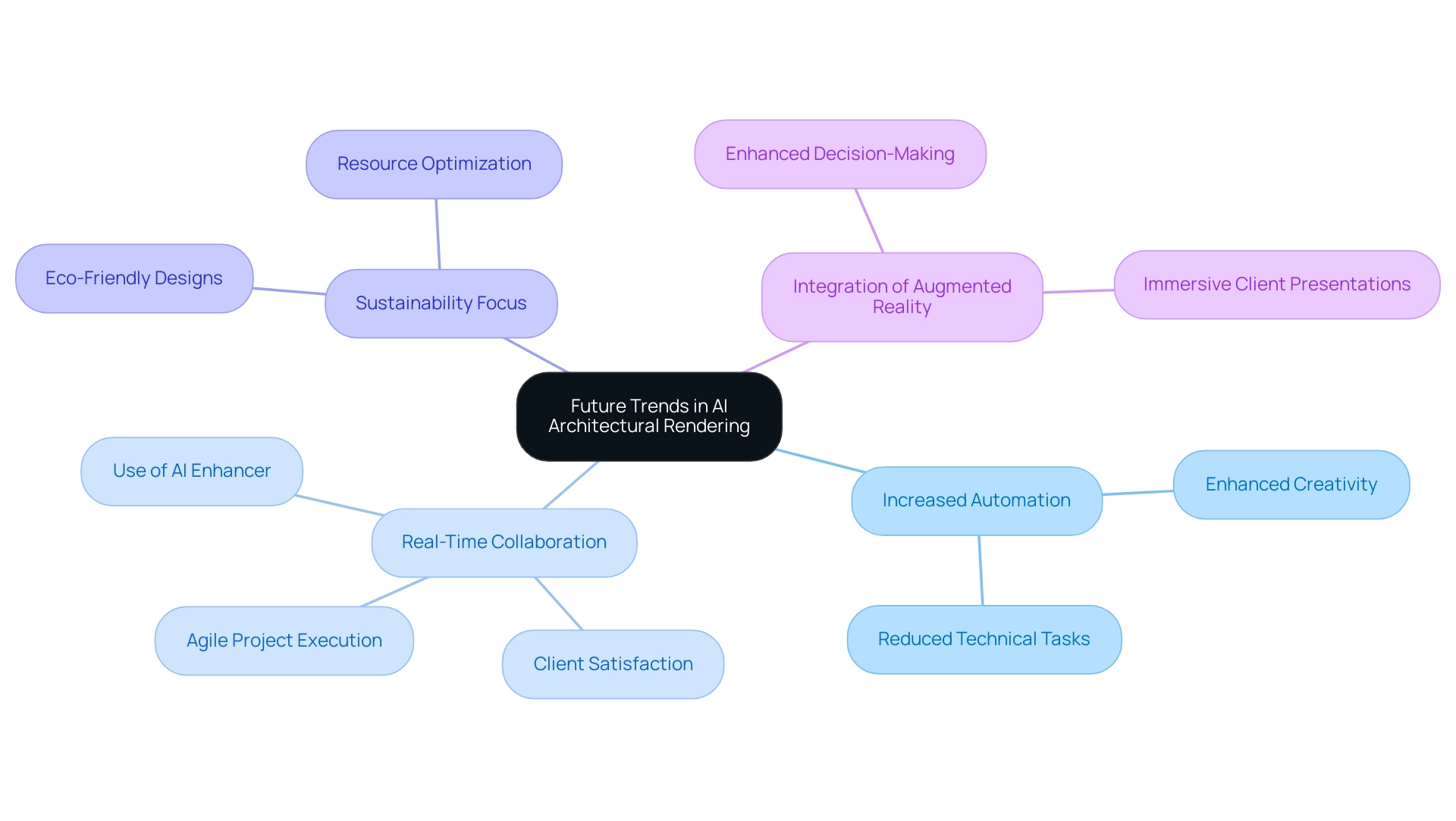
0 Comments